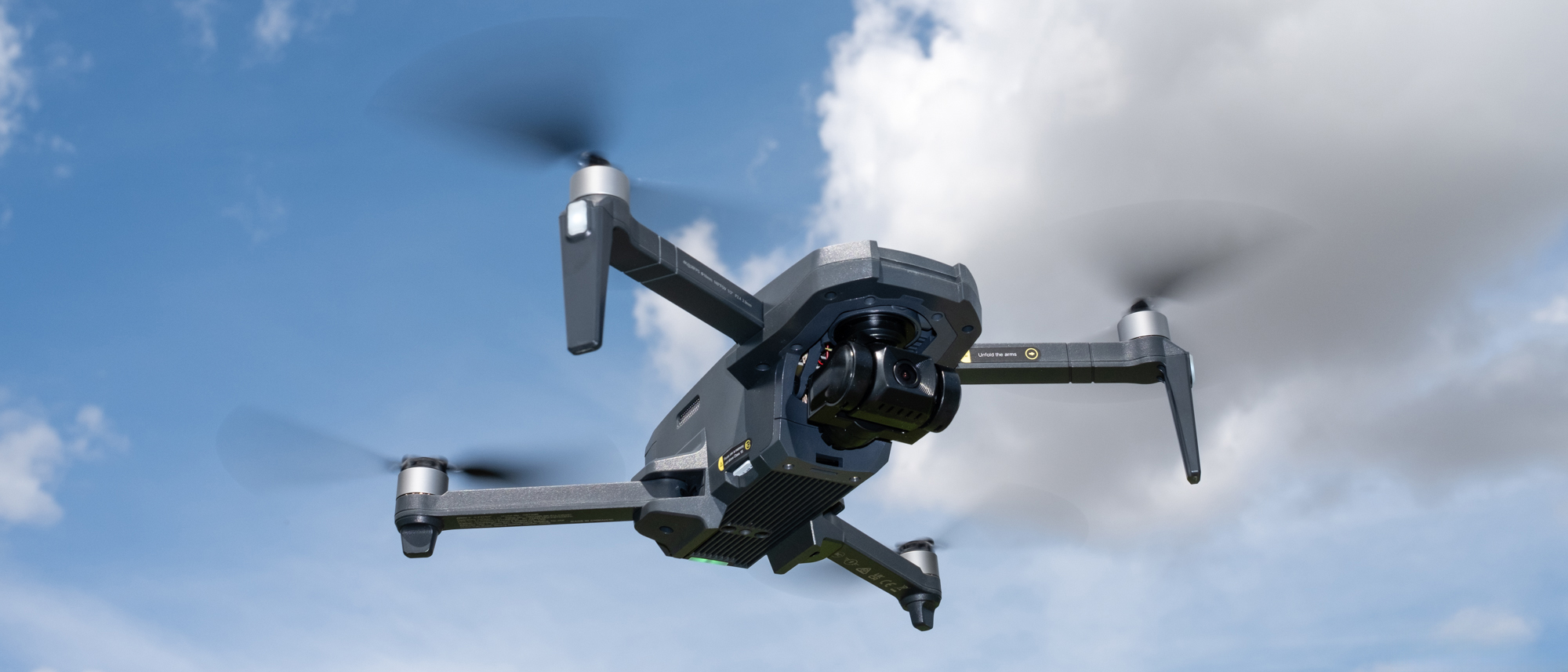TechRadar Verdict
The Holy Stone HS720R is Holy Stone’s first model to feature a 3-axis mechanical gimbal, which helps to produce smooth video footage during flight, plus its flight performance is reasonably good. We also get a new time-lapse feature that is a great addition to a Holy Stone model, but 4K 30fps video quality is mediocre and far from being the best performer in this area.
Pros
- +
New time-lapse feature
- +
Up to 4K video
- +
3-axis mechanical gimbal
Cons
- -
The drone drifts when hovering
- -
Image quality isn’t great
- -
Extremely basic camera control
Why you can trust TechRadar
Two-minute review
Beginner drones are improving all the time, with less expensive models slowly beginning to enjoy more advanced features previously only seen in higher-end models. The Holy Stone HS720R is the first Holy Stone model to feature a 3-axis mechanical gimbal that works alongside Electronic Image Stabilisation to produce smoother video, making it the best Holy Stone drone to date.
The inescapable reality for companies in the drone world like Holy Stone, however, is that DJI reigns supreme, and offers some incredibly stiff competition. Even at this beginner level, the inexpensive Mini 2 SE that was launched earlier this year as DJI’s most basic drone, and costs just $339 / £309 / AU$599 for the basic kit with one battery, is less expensive than the HS720R. Then there's models such as the DJI Mini 3, which is one of the best beginner drones available, albeit much more expensive.
The HS720R costs $360 / £350 and is available from Amazon in the United States and United Kingdom, while an Australia release is TBC. The kit includes the drone, a controller, one battery, a USB-C charging cable, a set of spare propellers, a screwdriver for changing propellers and a carry case, so everything you need to get started. But with this increased cost over the DJI Mini 2 SE, the only advantage the HS720R holds is the ability to shoot 4K video as opposed to 2.7K which the Mini 2 SE is capable of capturing.
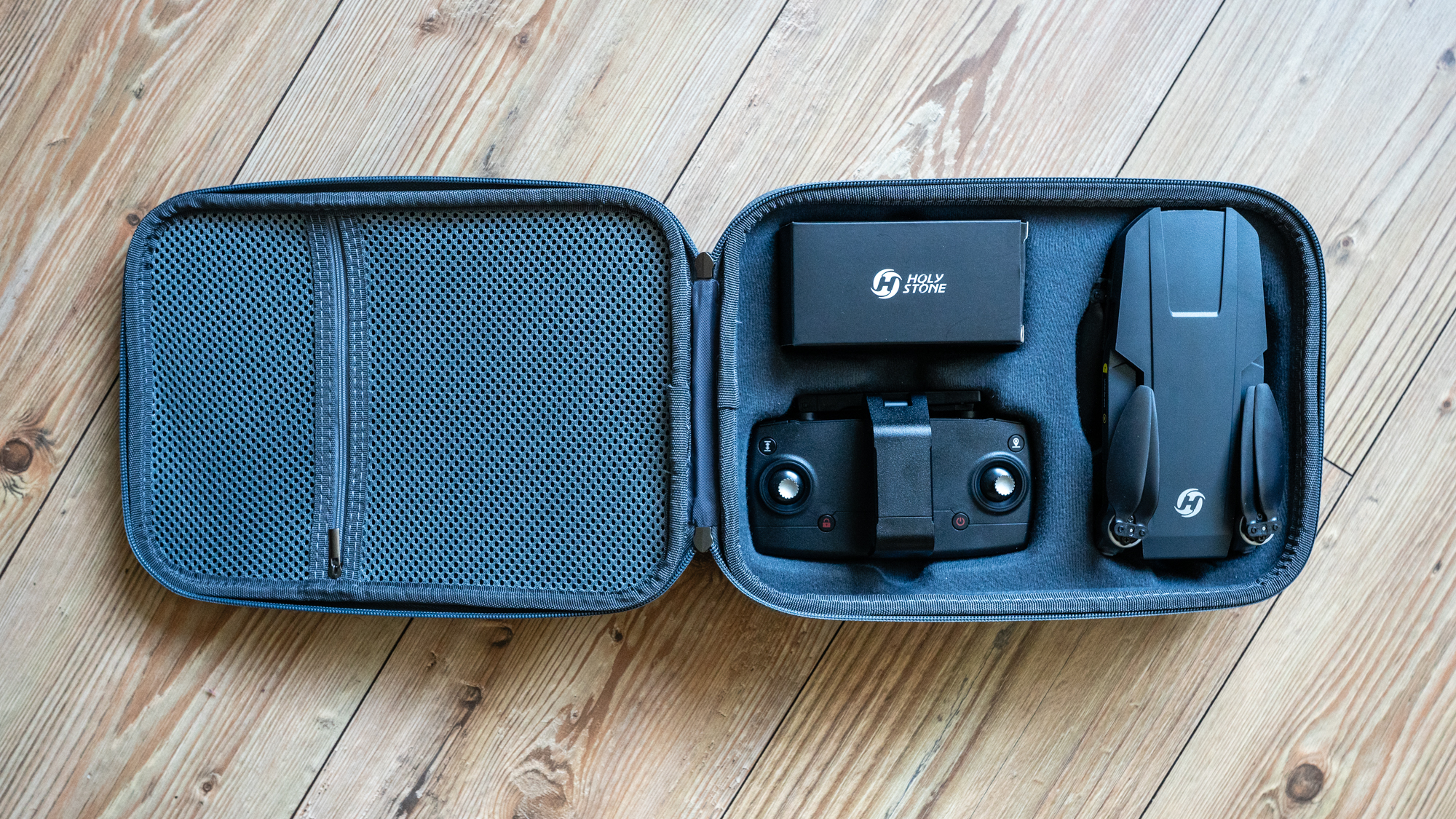
The HS720R features a folding design, like most consumer drones these days, that takes the drone from a petite 6.6x3.9x2.8 in / 168x99x71 mm when folded to 12x9.3x2.8 in / 305x238x71 mm when it’s unfolded for flight. It also comes in at a weight of 13.72oz / 389g, so despite being a compact and reasonably lightweight model it, unfortunately, sits just outside of the regulator sub-249 g category.
Build quality is pretty good overall, but the HS720R certainly doesn’t ooze high quality, which is to be expected for the price. Having said that, the Mini 2 SE does enjoy the build quality and reliability we’ve come to enjoy with DJI drones and for a slightly lower price. I guess the main point here is that the DJI Mini 2 SE is the better model in most areas and less expensive, but the HS720R does provide an alternative option if you’d prefer not to use a DJI drone.
Battery life from the 2,950mAh LiPo battery is advertised as enabling a flight time of 26 minutes. Testing in summer weather, I was able to push a full battery to just under 24 minutes – a solid performance – at which point the drone landed thanks to auto Return to Home. When the battery level reaches 30-40%, altitude is limited to 120m, while distance is limited to 300m to ensure the drone can return to home, and to be fair this limitation doesn’t cause any issues when capturing photos and videos. Battery charging time is around five hours via USB-C, which is on the slow side, so buying additional batteries is essential.


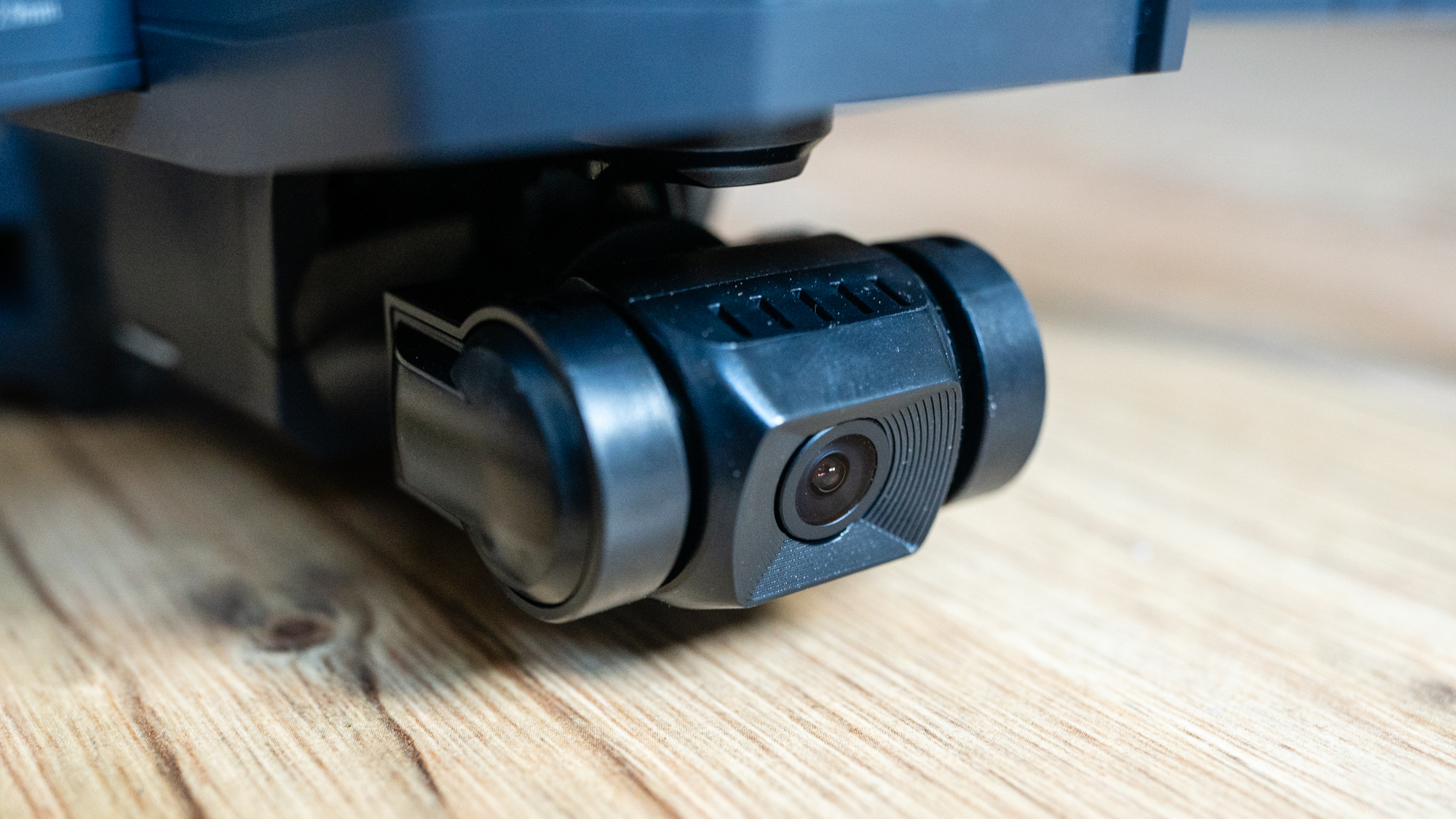
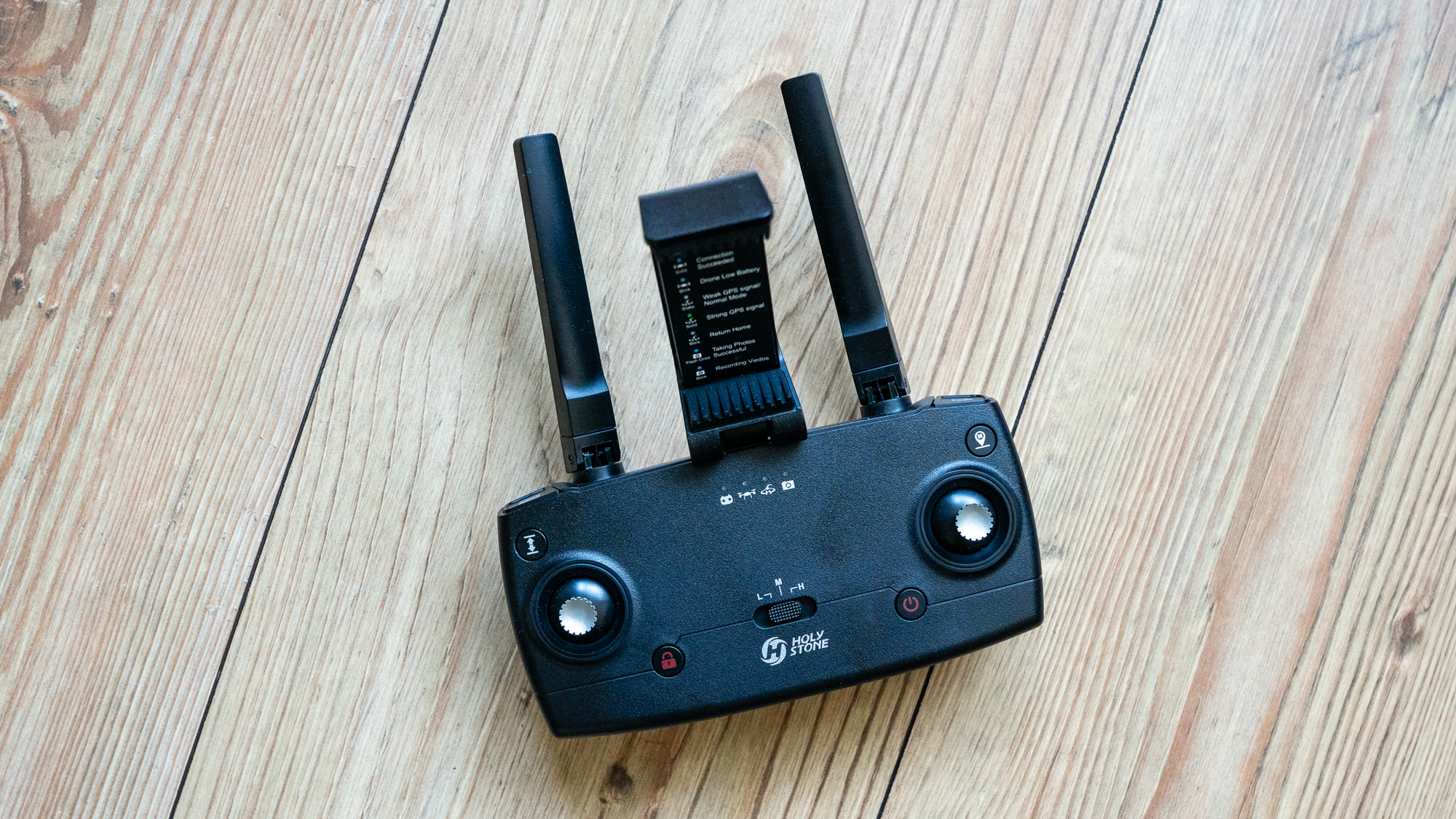
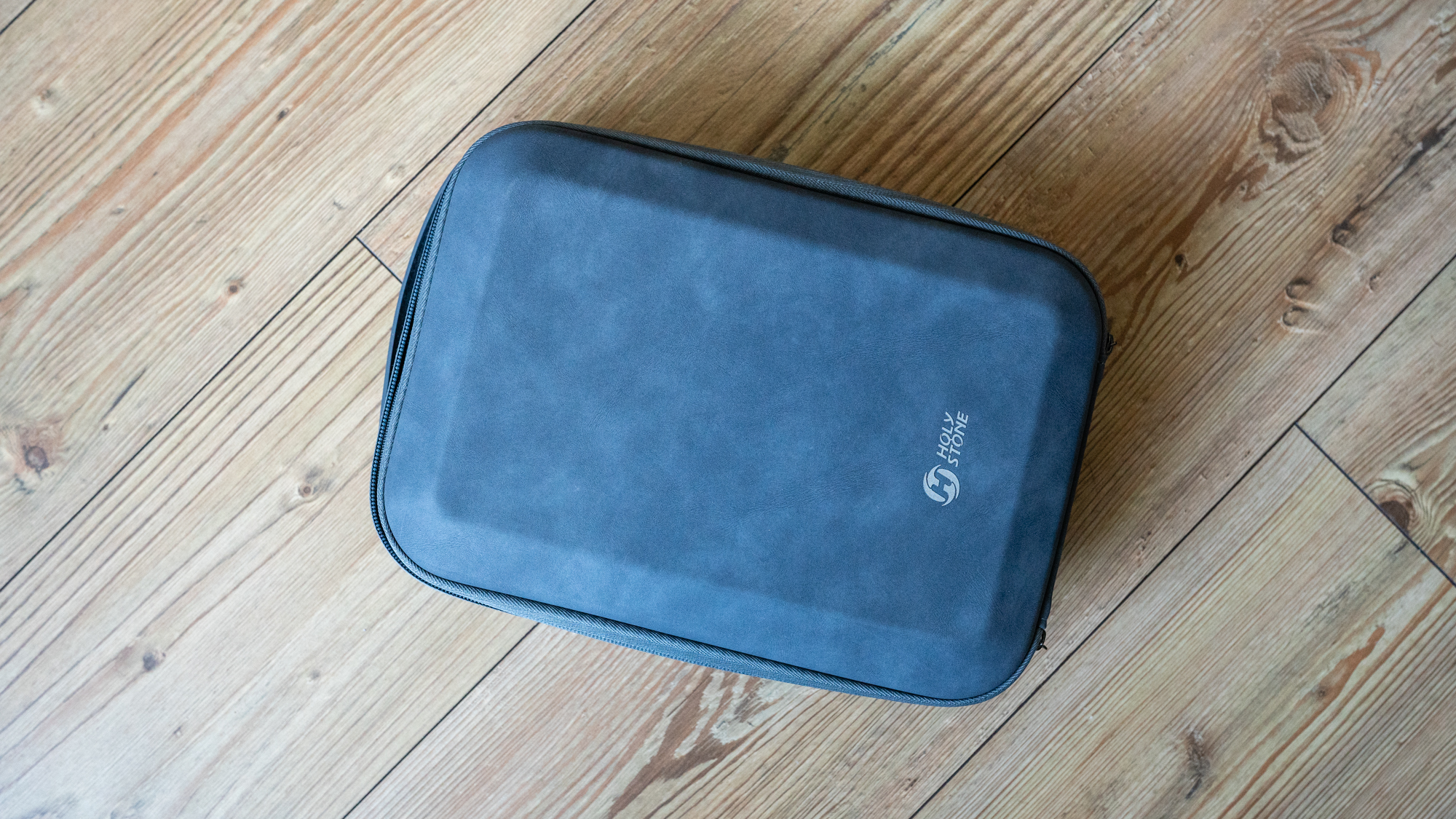
In flight, the HS720R performs fairly well but lacks the finesse of more expensive drones. Controls are generally responsive and accurate, although there can sometimes be a lag between control input and drone movements when the drone is being flown at longer distances within legal limits. It also tends to drift a little when hovering, despite using GPS positioning, so with no collision avoidance, you have to take care when flying and hovering close to obstacles. In controlled flight, however, drifting isn’t an issue.
Sign up for breaking news, reviews, opinion, top tech deals, and more.
GPS positioning is an extremely useful feature, despite its imperfection with the HS720R, and with it comes Return to Home functionality (RTH) where the drone returns to the take-off location in certain situations and is useful for beginners and experienced drone pilots alike. Return to home can be activated manually by pressing the RTH button on the controller, when the transmitter loses signal with the drone for more than six seconds, or when the battery is low.
Other features include three flight speeds, Follow Me (subject tracking), Waypoint and Timelapse. These all work but as you’d expect, they’re not as refined, reliable or effective as more expensive drones. The timelapse feature does work well and is easy to set up with control over several variables, but it appears that timelapses captured by the HS720R are sped-up videos rather than a series of photos that have been converted to video. The results of both approaches look similar, if not identical, but for more control I'd like the ability to change the frequency that shots taken in.
Holy Stone HS720R video sample
The video above is 4K 30fps
Most people buy drones for their ability to capture aerial photos and videos, so the camera is an important feature. The image quality produced by the HS720R is OK for absolute beginners, but like other Holy Stone models, it’s not the drone’s strongest point. The camera offers a wide 130-degree field of view, but the gimbal only pitches between 0 to 70-degrees so it can’t face straight down at the ground. Strong barrel distortion also presents itself the more the camera it’s pitched downwards, while chromatic aberration (color fringing) can be seen along high-contrast subject edges at all gimbal pitches.
Video quality appears to be slightly better than photo quality, which is common with cheaper beginner drones. Photos are captured in JPEG format in 4K dimensions, which translates to 8.2MP images. Videos can be captured in 4K at 30fps and FHD (1080P) at 60fps, and the 3-axis gimbal – alongside Electronic Image Stabilisation – does indeed produce smooth video footage during flights.
Holy Stone HS720R photo samples
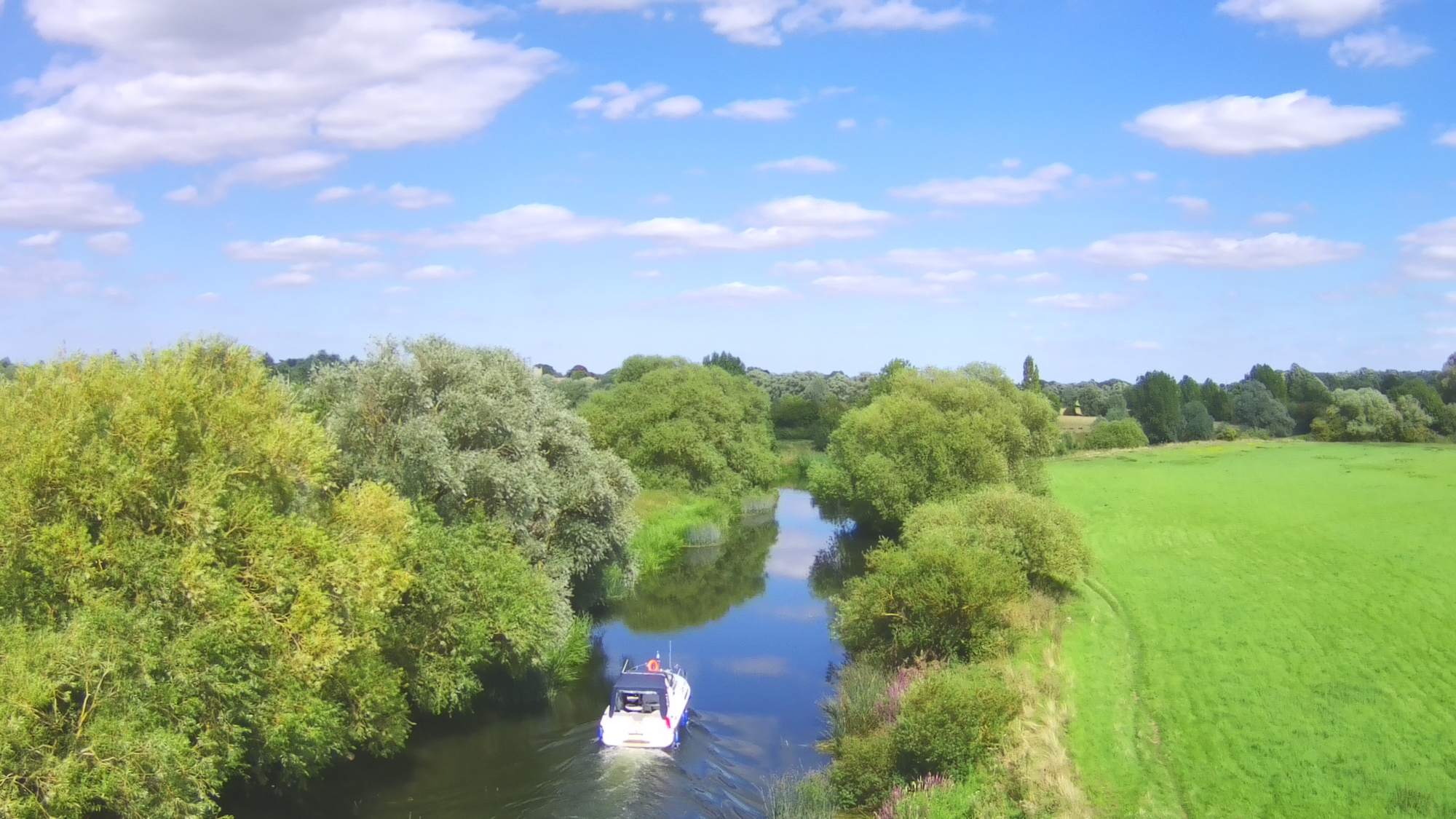

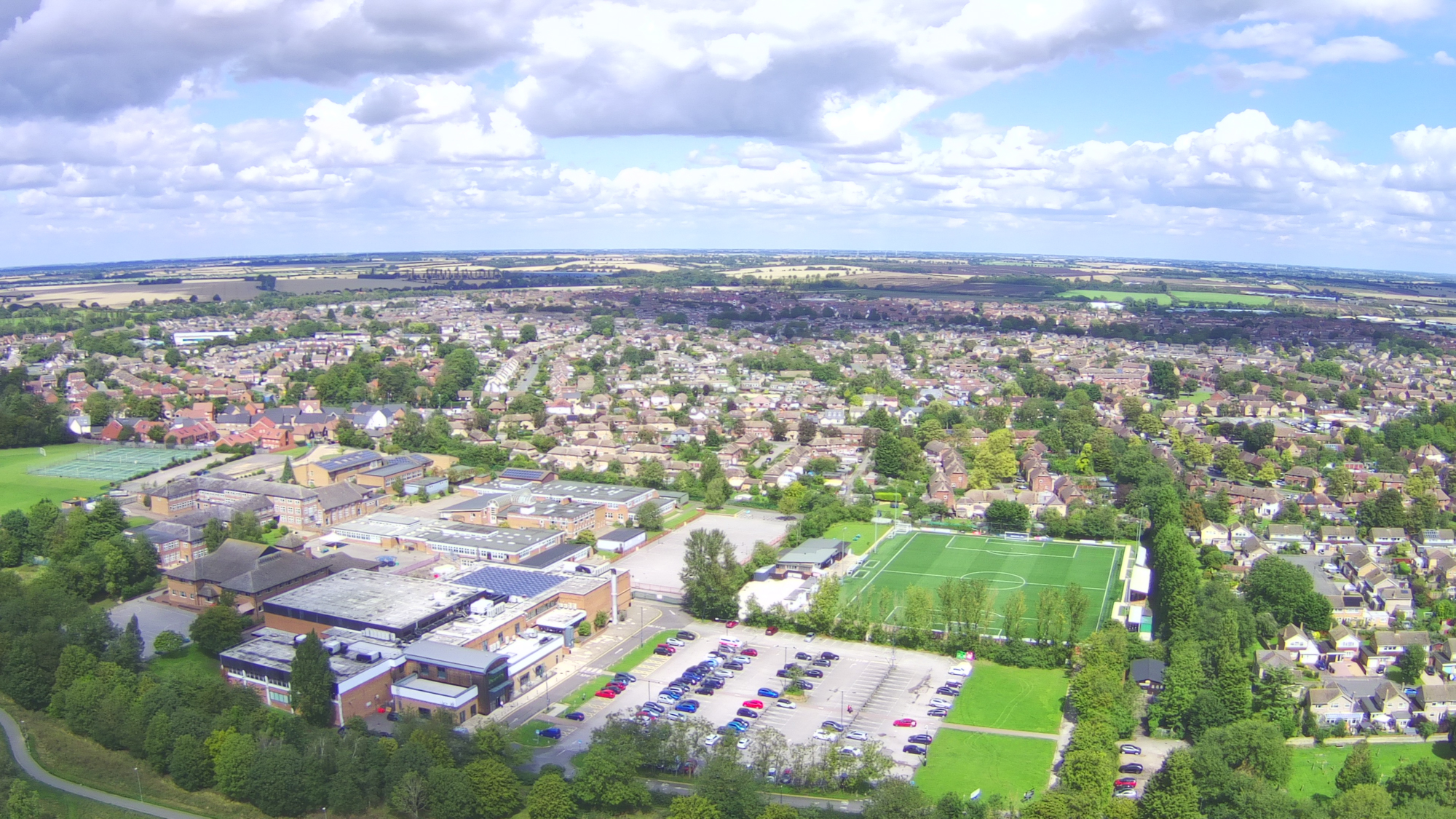


Camera control is extremely limited and it’s safe to say that the HS720R is a point-and-shoot drone only, limited to manual control over Brightness, Saturation, ISO and White Balance. There are also three creative effects – Grayscale, Bright and Nostalgic that can be applied – but in most situations, it’s best to shoot in standard colour and make adjustments to photos and videos in post-production to provide greater flexibility.
Should I buy the Holy Stone HS720R?

Buy it if...
You’d prefer a non-DJI drone
DJI is the best drone company in the world, but not everyone wants to use their drones for whatever reasons. If this is you, the HS720R is an alternative option worth considering.
You’re looking for simplicity
The HS720R is extremely easy to use in terms of both flight and image capture. This makes it incredibly beginner-friendly with little to confuse or overwhelm inexperienced pilots.
Image quality isn’t a priority
The HS720R can capture OK photos and videos in terms of image quality, which could be fine for absolute beginners who are more interested in learning the basics of drone flight.
Don't buy it if...
You require improved image quality
If great image quality is high on your list of requirements, the HS720R is not the drone for you. For the best image quality at the lowest price, the DJI Mini 3 is the drone for you.
You require advanced features
If you’d like more advanced features, including collision avoidance, more effective subject tracking and waypoint flight planning, you’ll have to increase your budget to accommodate a more advanced and expensive drone model.
You need faster battery charging
With battery charging taking around five hours via USB-C, the wait between charging and flying is considerable. More expensive drones provide faster charging and often longer flight times.
How I tested the Holy Stone HS720R
The Holy Stone HS720R was tested over several days of flying in a range of locations, environments and weather conditions (excluding rain) to test flight performance, flight features, overall handling and image quality for both photo and video capture. All testing is conducted in a way that meets local aviation laws and restrictions to ensure that all flights are safe and legal.
Drones are always tested using manual flight patterns for video that are typical of professional aerial video capture to shoot visually interesting footage. This also provides the opportunity to test aspects such as the connection between the drone and controller, latency between the two and the accuracy of the controls and flight in general.
With nearly 30 years of photographic experience and 15 years working as a photography journalist, I’ve been covering drones in terms of shooting and editing techniques, alongside writing drone reviews for many years. As well as flying most consumer and prosumer models, I’ve previously held a PfCO (Permission for Commercial Operations) issued by the Civil Aviation Authority in the UK, and now fly under an A2 CofC (A2 Certificate of Competency).
First reviewed August 2023

James Abbott is a professional photographer and freelance photography journalist. He contributes articles about photography, cameras and drones to a wide range of magazines and websites where he applies a wealth of experience to testing the latest photographic tech. James is also the author of ‘The Digital Darkroom: The Definitive Guide to Photo Editing’.
